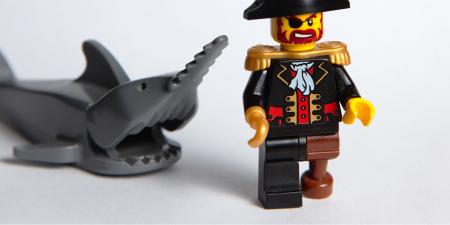Physical medicine and rehabilitation (PM&R), or physiatry, is a medical specialty focused on prevention, diagnosis, rehabilitation, and therapy for patients who experience functional limitations resulting from injury, disease, or malformation. Although the specialty is a relatively young one (with beginnings in the early twentieth century), fundamentals of the field originated during ancient times. The history of PM&R crosses many cultures and geographic boundaries.
The Origins of Rehabilitation Therapy
The word “therapy” comes from the ancient Hebrew word refua (healing) [1]. Rehabilitation therapy, an essential component of the PM&R treatment approach, has a long history. Thousands of years ago the ancient Chinese employed Cong Fu, a movement therapy, to relieve pain; the Greek physician Herodicus described an elaborate system of gymnastic exercises for the prevention and treatment of disease in the fifth century BCE [2]; and the Roman physician Galen described interventions to rehabilitate military injuries in the second century CE. During the Middle Ages, the philosopher-physician Maimonides emphasized Talmudic principles of healthy exercise habits, as well as diet, as preventive medicine in Medical Aphorisms, published between 1187-1190; and in 1569 the philologist-physician Mercurialis promoted gymnastics as both a preventive and a rehabilitative method in The Art of Gymnastics. In the eighteenth century, Niels Stenson explored the biomechanics of human motion and Joseph Clement Tissot’s 1780 Medical and Surgical Gymnastics promoted the value of movement as an alternative to bed rest for patients recovering from surgery, facing neurological conditions, and recuperating after strokes [2]. In the nineteenth century, the concept of neuromuscular re-education was proposed by Fulgence Raymond (1844-1910) [3].
The History of Physical Medicine Rehabilitation in the United States
The development of PM&R in the US has origins both in comprehensive rehabilitative programs for polio survivors and veterans and in academic departments and medical centers.
In 1921, Franklin Delano Roosevelt (FDR) developed a high fever and lower extremity paralysis from a polio virus infection. His bout with polio necessitated his rehabilitation at Warm Springs, Georgia, where therapeutic swimming and sun exposure were believed to help him regain leg strength and physical endurance. An avid proponent of rehabilitation, FDR bought the property at Warm Springs and turned it into a comprehensive rehabilitative center to help others affected with polio regain independence in activities of daily living. The services offered there included heliotherapy, swimming, exercise, training in orthotic use, muscle re-education, massage, and occupational and recreational therapy. Warm Springs, Georgia, is believed by many historians to be the first facility to provide comprehensive rehabilitative care [4].
The first university department of PM&R was founded by Dr. Frank Krusen at Temple University Medical School in 1929. Dr. Krusen acknowledged the critical importance of physical medicine after contracting TB and needing a prolonged stay at a sanatorium, which interrupted his surgical career. Recognizing the intense deconditioning and functional deterioration faced by bedbound patients in the sanatorium, Dr. Krusen decided that physical medicine should address these problems and become a medical specialty with a strong scientific basis. He rigorously studied the effects of physical agents on the human body, used physical therapy to help his patients recover, and published his findings prolifically. In 1935, as a result of his work he was offered a chair in a new department of physical medicine at the Mayo Clinic in Rochester, Minnesota. At the Mayo clinic, Krusen studied the effects of therapeutic exercise and physical modalities like short-wave diathermy and ultraviolet radiation on patients with military-related disabilities, back pain, and postsurgical musculoskeletal complications. In 1941 Dr. Krusen published Physical Medicine, the first comprehensive textbook on that topic. He is also credited with coining the term “physiatrist” [5].
During the middle and latter part of the century, improvements in medical care, including the use of antibiotics during World War II, saved the lives of many wounded soldiers, who returned home disabled and needing rehabilitative care [6]. As disabled veterans came to military hospitals, the US established the Army Air Forces Convalescent Training Program in 1942, which, under the direction of Dr. Howard A. Rusk, focused on comprehensive rehabilitative services including physical, neuropsychological, and occupational therapies [3]. Dr. Rusk, who is legendary in the field of PM&R and widely recognized as “the father of comprehensive rehabilitation,” founded in 1951 the world’s first university-affiliated comprehensive rehabilitation center at New York University, later renamed the Howard A. Rusk Institute of Rehabilitation Medicine [6, 7].
Contemporary support for physiatry’s establishment as a medical specialty came from philanthropist Bernard Baruch, who sought to advance the research of his physician father, Simon Baruch, on the use of hydrotherapy for patients with chronic diseases. The Baruch Committee on Physical Medicine was formed in 1943 under Dr. Krusen’s auspices [8, 9] to promote physical medicine—“the employment of the physical and other effective properties of light, heat, cold, water, electricity, massage, manipulation, exercise and mechanical devices for physical and occupational therapy in the diagnosis or treatment of disease” [10]—and rehabilitation—“the restoration of people handicapped by disease, injury, or malformation as nearly as possible to a normal physical and mental state” [11]—to address the needs of the estimated four million disabled people in 1940 and the expected surge of World War II veterans with disabilities [8]. Large grants were made by the Baruch Committee to several prominent medical centers for research and education in the field of physical medicine, and, in 1947, the American Board of Physical Medicine was established [9].
Physical Medicine Rehabilitation Today
Today, the American Board of Physical Medicine and Rehabilitation defines physiatrists as
nerve, muscle, and bone experts who treat injuries or illnesses that affect how you move…diagnose and treat pain, restore maximum function lost through injury, illness or disabling conditions, treat the whole person, not just the problem area, lead a team of medical professionals, provide non-surgical treatments, [and] explain your medical problems and treatment/prevention plan [12].
As a general rule, many medical specialties focus on the acute management and stabilization of pathologic conditions (e.g., pneumonia or a fractured femur); PM&R also focuses on holistic patient-centered care that addresses social circumstances (e.g., type of job, hobbies), living space (e.g., number of steps to get into the house, presence of grab bars in the bathroom), and activities of daily living (e.g., proficiency in walking, washing, dressing, cooking, driving). Physiatrists customize treatment plans for patients based on these parameters. The physiatry treatment armamentarium often includes medications, therapeutic exercise, injections, physical modalities, and education.
By emphasizing prevention, diagnosis, and treatment of patients’ functional limitations resulting from many different medical conditions, PM&R helps to maintain and restore optimal function for patients in many spheres of life including the social, emotional, medical, and vocational. Known as the quality-of-life medical specialty, PM&R aims to enhance a person’s functional prognosis through a dynamic team-oriented approach. The physiatrist leads a multidisciplinary team that includes practitioners from physical therapy, occupational therapy, nursing, speech and language pathology, and other specialties. As team leaders, physiatrists champion the rights and autonomy of their patients by maximizing function and optimizing their living situations so that they can contribute to the community in the least restrictive setting. Physiatry’s overarching commitment to optimizing the quality of life and neuromuscular function of an aging society has been recognized internationally.
Ethics in PM&R
With the historical growth and evolution of the field of PM&R summarized above, a variety of ethical and moral issues has emerged. Kirschner et al. [13] identified general subsets of ethical issues confronted by physiatrists in contemporary practice and categorized their frequency: 24 percent involved health care reimbursement changes; 17 percent involved conflict among patients, physicians, interdisciplinary team members, and families around goal setting; and 7 percent involved assessing patients’ decision-making capacity. Although a comprehensive discussion of these issues is beyond the scope of this article, we have selectively listed a few of the major ethical flashpoints below:
- Scarce resource allocation and the potential for discrimination against disabled people,
- The ethics of accommodating people with disability and chronic neuromuscular disorders, including in medical settings,
- Identifying optimally inclusive nomenclature and terminology (e.g., “physical diversity” rather than “disability”),
- Conflict between the goals of promoting acceptance and accommodation for persons with disability on one hand and securing resources for restoration of functional efficiency and meaningful mission on the other hand,
- The ethics of rehabilitating persons with neurological and behavioral disorders with nosognosia (deficits of awareness), in which maximizing rehabilitation may mean abandoning or overriding patient autonomy [14].
Medical ethics provides a set of moral principles that guide the everyday practice of medicine. Jonsen et al. [15] propose that clinical problems be analyzed in light of four priorities or topics: medical indications, patient preferences (according to the principle of respect for autonomy, assessment of patients’ expected quality of life, and context, such as economic constraints, procedures, and laws.
As team leaders, physiatrists must carefully and judiciously consider each of the above elements when making a decision. Additionally, consultation with the hospital medical ethics committee may be necessary. It may be challenging to reach consensus about a patient’s treatment plan because health care clinicians consistently rate the quality of life of patients with disability or chronic illness lower than the patients rate it themselves, fostering disagreement between patient and treatment team [16].
Lewin et al. define patient-centered care as care that shares decisions and interventions with the patient and views the patient as a whole person with social roles, rather than as an impaired organ [17]. The role and ultimate obligation of the physiatrist as the leader of the interdisciplinary team is to thoroughly know and understand the patient as a person [8]—including his or her interactions with family, employment, community, and environment. The physiatrist must have sufficient knowledge and experience to predict functional outcomes following rehabilitation for each patient. Sufficient evaluation must be carried out to confirm the diagnosis and prognosis. Optimal communication with the patient, family, and interdisciplinary team must take place throughout the patient’s care.
Recently, an analysis model, PCEAM-R—Patient Centered Care Ethics Analysis Model for Rehabilitation—has been developed to guide ethical rehabilitative care, given the complexity of the care team, patient disablement, and a variety of possible interventions. This six-step process for ethical decision making is theoretically grounded in the International Classification of Functioning Disability and Health and has a sufficiently detailed list of questions to provide a comprehensive and balanced assessment of each patient’s situation [18]. Responsible physiatrists may want to consider using such guides to ensure high-quality care.
On an ongoing basis it is also the responsibility of the physiatrist as a citizen to support policies and laws that promote the independence and maximize the function of people with disabilities in the community [17].
Conclusion
PM&R physicians in their role as staunch advocates for persons with disabilities strive to help people feel and function their best with customized care plans delivered by multidisciplinary teams. The overarching goal is the restoration of optimal patient function in multiple dimensions of life including the vocational, emotional, social, and medical by combining the best of the traditional medical model (“adding years to life”) with the functional approach (“adding life to years”). Its continuing popularity among medical students [19] has been fueled by its stalwart commitment to addressing the quality-of-life requirements of an aging population without surgery. The noble mission of PM&R physicians is perhaps best summarized by the words of inspirational author and educator William Arthur Ward: “A true friend knows your weaknesses but shows you your strengths, feels your fears but fortifies your faith; sees your anxieties but frees your spirit; recognizes your disabilities but emphasizes your possibilities” [20]. The physiatrist ever strives to achieve this goal.
References
-
Origin of English word therapy. Edenics. http://edenics.net/english-word-origins.aspx?word=THERAPY. Accessed on April 24, 2015.
-
Dreeben O. Development of the physical therapy profession. Introduction to Physical Therapy for Physical Therapist Assistants. Sudbury, MA: Jones and Bartlett; 2007:3-22.
-
Conti AA. Western medical rehabilitation through time: a historical and epistemological review. Sci World J. 2014(2014):432506.
- Verville RE, Ditunno JF. Franklin Delano Roosevelt, polio, and the Warm Springs experiment: its impact on physical medicine and rehabilitation. PM R. 2013;5(1):3-8.
- Opitz JL, Folz TJ, Gelfman R, Peters DJ. The history of physical medicine and rehabilitation as recorded in the diary of Dr. Frank Krusen: part 1. Gathering momentum (the years before 1942). ArchPhys Med Rehabil. 1997;78(4):442-445.
-
O’Young BJ, Young MA, Stiens SA. What is physical medicine and rehabilitation? In O’Young BJ, Young MA, Stiens SA, eds. Physical Medicine and Rehabilitation Secrets. 3rd ed. Philadelphia, PA: Mosby/Elsevier; 2008:9-14.
- Blum N, Fee E. Howard A. Rusk (1901-1989): from military medicine to comprehensive rehabilitation. Am J Public Health. 2008;98(2):256-257.
- Krusen FH. The future of physical medicine with special reference to the recommendations of the Baruch Committee on Physical Medicine. JAMA. 1944;125(16):1093-1097.
- Folz TJ, Opitz JL, Peters DJ, Gelfman R. The history of physical medicine and rehabilitation as recorded in the diary of Dr. Frank Krusen: part 2. Forging ahead (1943-1947). Arch Phys Med Rehabil. 1997;78(4):446-450.
-
Krusen, 1093.
-
Folz et al., 447.
-
American Academy of Physical Medicine and Rehabilitation. What is a physiatrist? http://www.aapmr.org/patients/aboutpmr/Pages/physiatrist.aspx. Accessed April 30, 2015.
- Kirschner KL, Stocking C, Wagner LB, Foye SJ, Siegler M. Ethical issues identified by rehabilitation clinicians. Arch Phys Med Rehabil. 2001;82(12 suppl 2):S2-S8.
-
Young MJ. Pathologies of thought and first-person authority. Philos Psychiatr Psychol. In press.
-
Jonsen AR, Siegler M, Winslade WJ. Clinical Ethics: A Practical Approach to Ethical Decisions in Clinical Medicine. 7th ed. New York, NY: McGraw-Hill; 2010.
-
Albrecht GL, Devlieger PJ. The disability paradox: high quality of life against all odds. Soc Sci Med. 1999;48(8):977-988.
-
Lewin SA, Skea ZC, Entwistle V, Zwarenstein M, Dick J. Interventions for providers to promote a patient-centered approach in clinical consultations. Cochrane Database Syst Rev. 2001(4):CD003267.
-
Hunt MR, Ellis C. A patient-centered care ethics analysis model for rehabilitation. Am J Phys Med Rehabil. 2013;92(9):818-827.
-
2018;
Association of Academic Physiatrists Residents/Fellows Council. PM&R medical student interest group guidebook. http://c.ymcdn.com/sites/www.physiatry.org/resource/resmgr/medical_student_interest_gro.pdf. Accessed April 27, 2015.
-
Zuck RD, ed. The Speaker’s Quote Book. Grand Rapids, MI: Kregel Academic; 2009:204.



